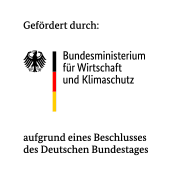Background
The @CITY research initiative brings together 15 partners from the automotive industry, supply industry, software development and universities. Subdivided into the two projects @CITY and @CITY-AF, concepts, technologies and prototypical applications are developed, enabling automated driving in complex urban areas. The aim is to make the city traffic of the future as safe, comfortable and efficient as possible for all road users. The research initiative is supported by the Federal Ministry for Economic Affairs and Climate Action (BMWK) with a funding volume of around 20 million euros.
The Institute of Ergonomics is represented in the project @CITY-AF and will conduct research in the subproject “Human-Vehicle-Interaction” . This subproject deals with the interaction between the three protagonists: vehicle users, automated vehicles and other road users. The Institute of Ergonomics will work on the question of how everyday human forms of communication in traffic (eye contact, gestures etc.) can be “translated” to automated systems without misunderstandings.
Further information about the project can be found at https://www.atcity-online.de/
Aims
In order to maintain the traffic flow and to resolve (possible) conflicts, road users communicate through explicit and implicit signals continuously. Although communication between different road users is typical for the urban traffic area, it is still only partially researched. In the future scenario of highly automated driving (SAE L3), the vehicle has to assume the communicative function of a human driver. This results in far-reaching questions regarding the future communication between vehicle users, automated vehicles and other road users in mixed traffic in urban areas.
Method
To investigate these issues, the following task steps in the @CITY project are being worked on: First of all, scenarios in which communication between road users (including car drivers, pedestrians and cyclists) occurs are comprehensively described. Subsequently, relevant communication channels for the transmission of information between automated vehicles and other road users are identified. The knowledge gained should be transferred to the design of an automated communication concept and implemented prototypically. Finally, user studies should be carried out taking into account comprehensibility, security, acceptance by the users and targeting of communication in urban transport.
Results
Use cases and scenarios of communication between road users in urban traffic areas were documented in a catalogue. The detailed analysis of selected scenarios provides communication sequences that serve as a starting point for the human-centred development of external human-machine interfaces (eHMI) on the vehicle.
The human-centred designs and evaluations of eHMIs of automated vehicles for communication with other road users show that other road users benefit more from eHMI design solutions that not only signal the automation status, but also provide signals about the system’s perception of other road users and signals about the intention of the automated vehicle. The eHMI principles developed in the project are presented as an application-oriented catalogue of recommendations, with the help of which the development and evaluation of eHMIs for automated vehicles can be accompanied in practice in a targeted manner, e. g. by using the eHMI principles as a checklist.








